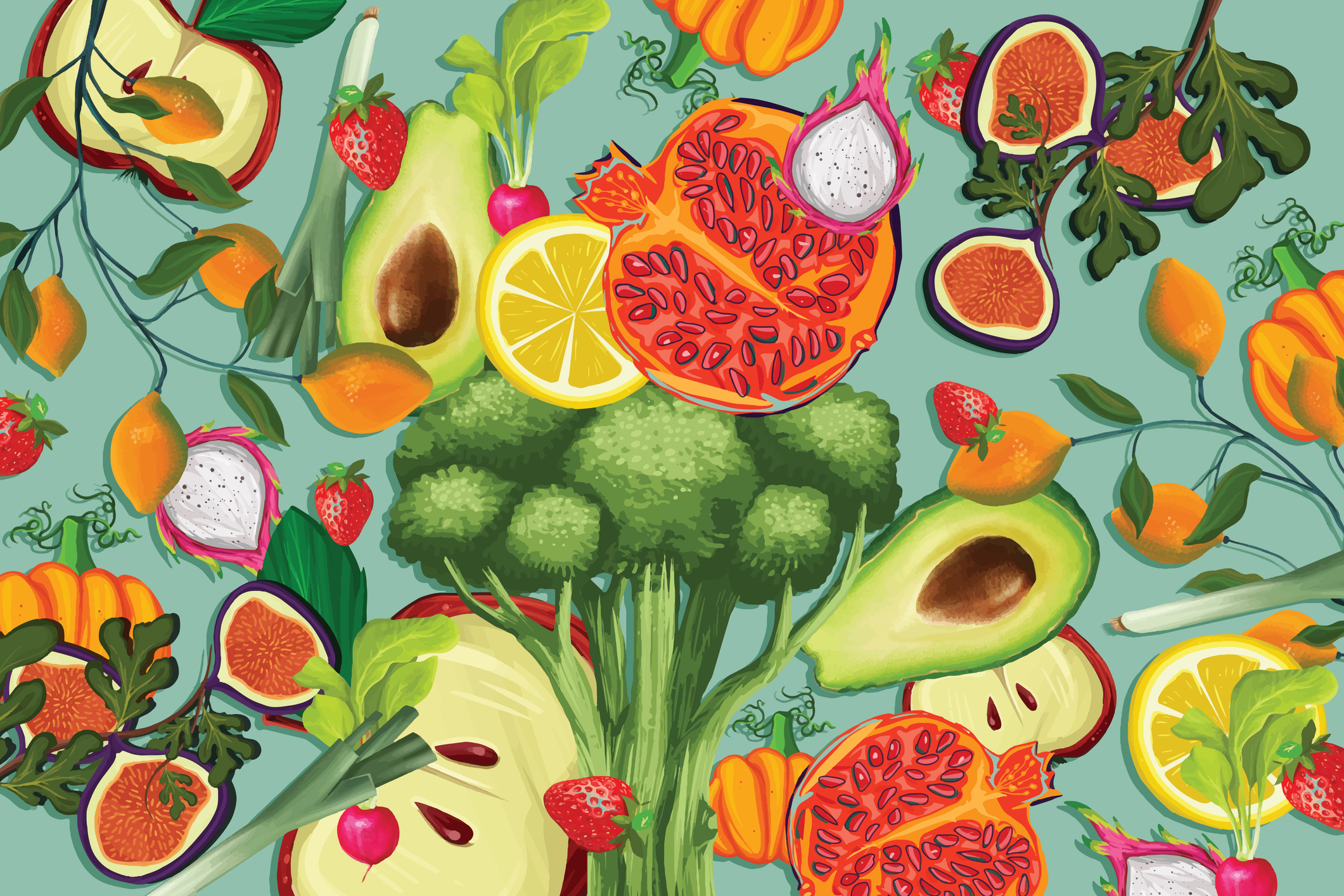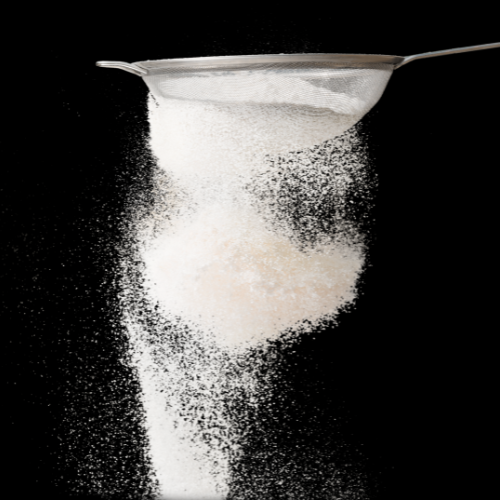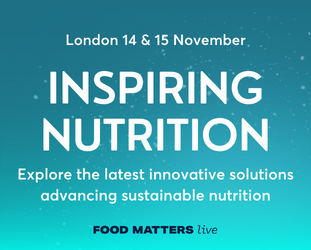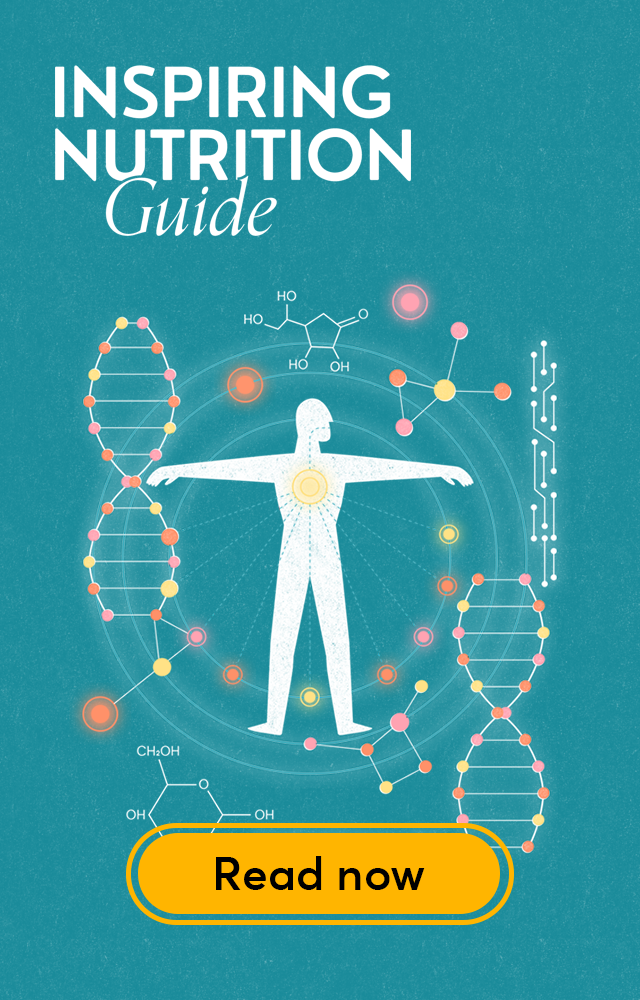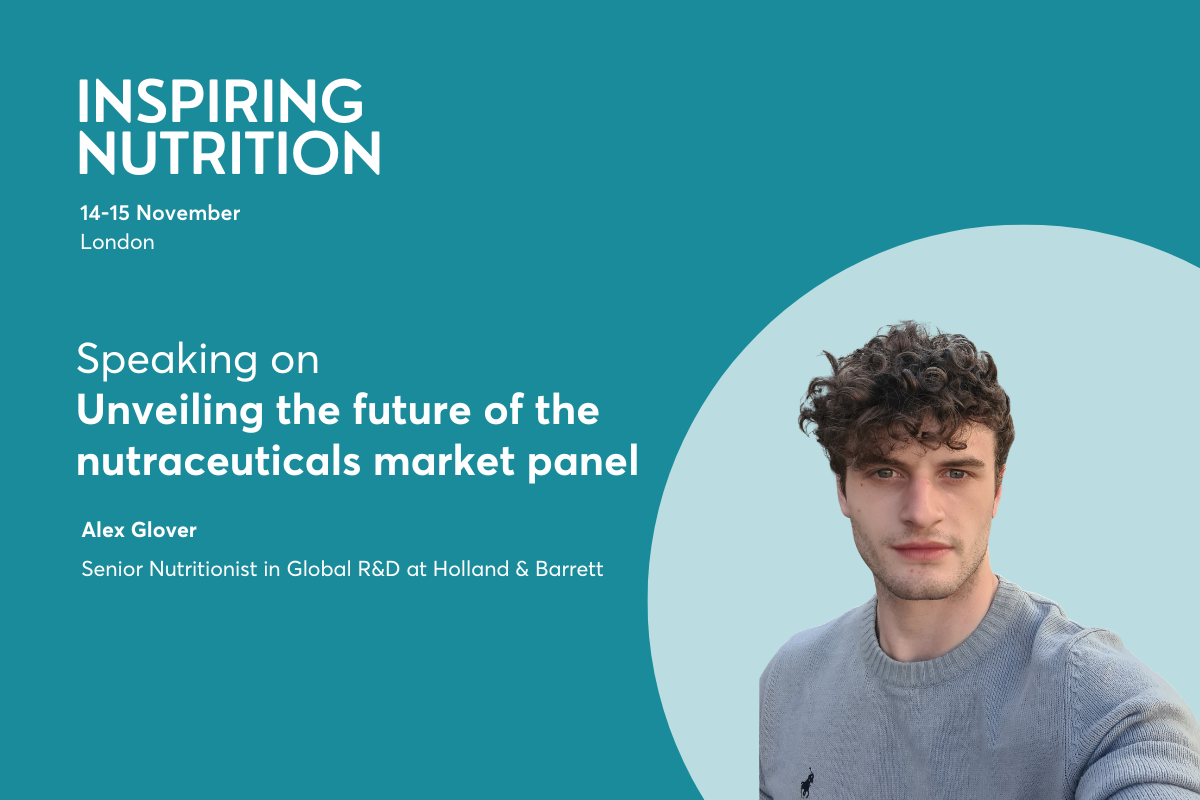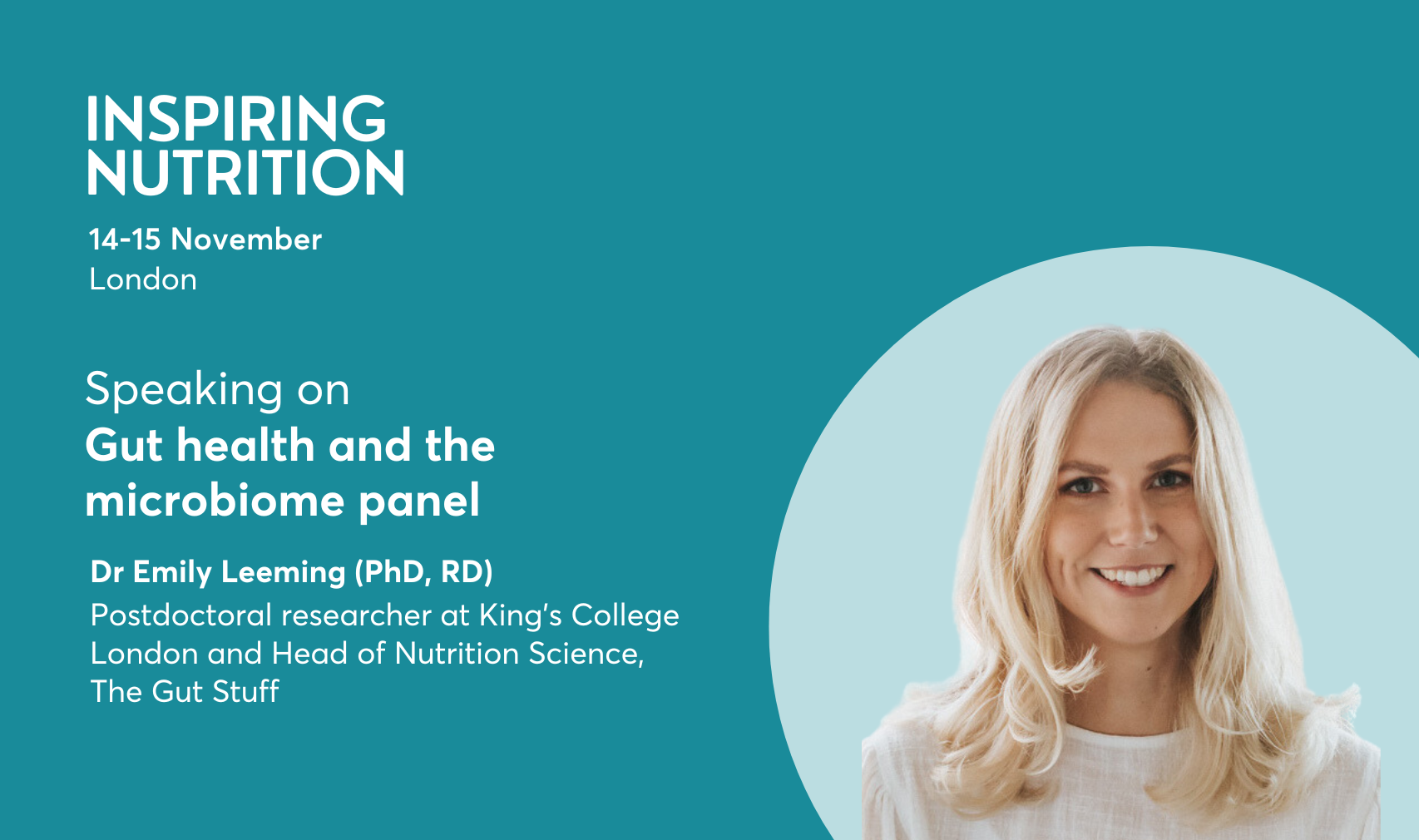In conversation with Miriam Ferrer: on consumer trust, “pixie dust” formulation and the food-mood connection…
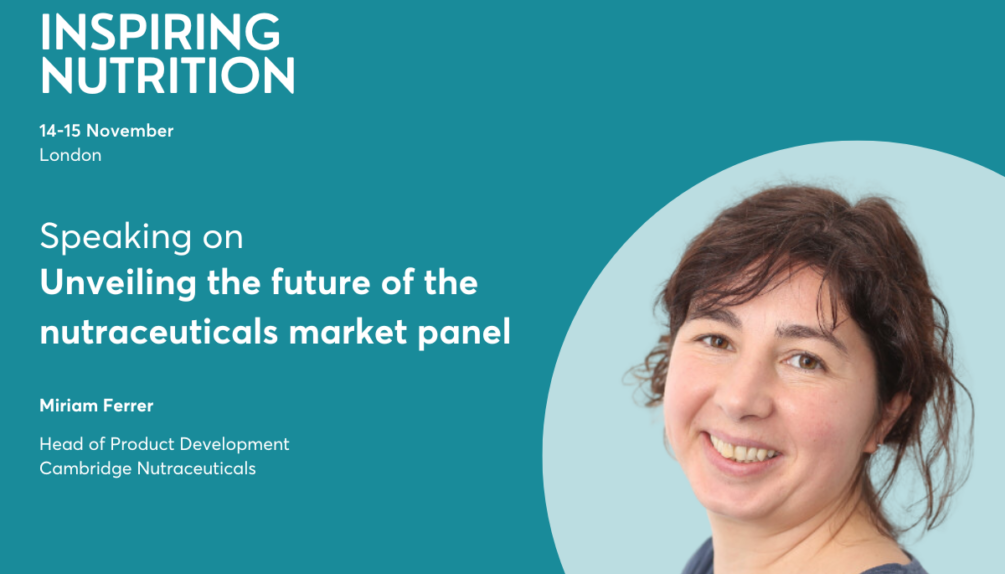
How do you go about identifying quality ingredients?
I make sure to attend lots of international trade shows and subscribe to industry newsletters, both of which are really good ways to hear about the latest trends and ingredients. Trade shows are particularly helpful, as are events like Food Matters Live’s Inspiring Nutrition because they’re a chance for me to talk to R & D teams and learn about ingredient developments.
Industry newsletters can be very commercial and as a scientist, I like to know the nitty gritty about ingredients and how they work at a molecular level. So, to balance this, I read a lot of scientific publications and journals.
What is the process to get a supplement from concept to market?
First and foremost, you must decide the product category – is it for brain health or digestive health? Related to this, you need to figure out the demographic. Are you formulating a product for children or seniors? Is it aimed at men, women, or both? Once you know this, you can decide whether it should be a gummy, a capsule, or a tablet.
All this needs to be well-defined and the answers to one will inform the others. For example, Omega threes are great ingredients for brain health but because they’re very oily, it’s difficult to put them in a capsule or a tablet.
“I get really frustrated when I see products that contain lots of functional ingredients but in such tiny amounts. These “pixie dust” amounts as we call them aren’t going to do anything for you – they’re just there because it sounds fancy. ”
The hardest bit in my view is the marketing side, so figuring out the product name and communicating it’s benefits to consumers clearly and accurately.
What’s the key to effective ingredient formulation?
One of the most important criteria when looking at effective supplement formulation is to make sure that you are using meaningful doses of the active ingredient, reflecting the amounts used in efficacy studies.
I get really frustrated when I see products that contain lots of functional ingredients but in such tiny amounts. These “pixie dust” amounts as we call them aren’t going to do anything for you – they’re just there because it sounds fancy.
Do you think there should be a human touchpoint when people are buying health supplements?
Stringent regulations around product claims can mean that on-product messaging can become very jargon-heavy. So yes, I think that it is helpful to have a human touchpoint, particularly when there are knowledgeable staff on hand to guide consumers.
With supplements in particular, people generally tend to be very dismissive. We start from a point of mistrust and scepticism with many consumers. I always find that it can help to chat with consumers over the phone or in person and offer honest, impartial advice.
For example, maybe I’ll say that a certain product isn’t right for them, or that they should consult a GP. People appreciate that and it shows we’re not just trying to push products and supplements on them. Having those conversations with consumers helps us as an industry to know what we should talk about and what we need to think about.
Is sustainability high on the agenda within the nutraceutical industry?
Sustainability is something that is coming up more and more in our industry, particularly because we tend to use ingredients that come from different and far-flung parts of the world. Many new companies are being creative in the way they source ingredients for their nutraceutical products, even looking at how they can extract things like carrot pomace and apple pomace leftover from making fruit juices for example.
“The growing eSports market is driving a lot of ingredient trends when it comes to cognitive health supplements because these athletes need to be mentally sharp when competing.”
Where do you think the industry is currently falling short on sustainability?
Packaging, and not just in terms of delivering the product to consumers, but also within supply chains as well. When you get a product manufactured and you ship it to the warehouse, there’s a lot of wrapping and palletising involved. Certain manufacturers we work with are trying to address this but it’s about finding that balance to make sure the ingredient remains protected in transit.
This is easier for some products than for others. For example, if you have ingredients which are easily oxidised then it requires blister packaging, which is not currently recyclable. Thankfully, there are lots of green packaging innovations emerging like PVC-free blisters. Whilst I think it’ll take some time to be adopted on a wide scale, many ingredient manufacturers are moving in the right direction.
What are some key ingredients within the wider trend of cognitive and brain health supplements?
A growing ingredient trend within brain health supplements right now is phospholipids. These are a type of fat found in our cell membranes, such as Phosphatidylserine. There seems to be a trend in the number of supplements being launched globally using these, in part because we’re moving towards more plant-based diets with fewer phospholipids.
“We’re seeing an increase in age-related diseases like Alzheimer’s and Parkinson’s. This is partly because people are living longer, of course, but not entirely.”
The growing eSports market is driving a lot of ingredient trends when it comes to cognitive health supplements because these athletes need to be mentally sharp when competing. That’s certainly been a driving factor behind the emergence of adaptogens and nootropics like Bacopa or Ashwagandha which are here to stay. Research into the gut-brain axis continues to drive interest in biotics as well, be those prebiotics, probiotics, or postbiotics.
Could you explain some of the pathways through which nutrition influences mood?
Without getting too sciency, there’s a link between the gut microbiome and the HPA axis which controls our bodies stress response. We also know that there are bacteria in our gut that produce neurotransmitters and hormones like serotonin and that these are shaped by long-term diets.
What role does nutrition play in cognitive decline?
We’re seeing an increase in age-related diseases like Alzheimer’s and Parkinson’s. This is partly because people are living longer, of course, but not entirely. We now eat a lot of ultra-processed foods which are high in sugars and saturated fats and low in the neuroprotective nutrients we need like Omega threes.
There’s a lot of data showing associations between increased consumption of ultra-processed foods and increased inflammation and oxidative stress. The brain is over 60% fat and has very few antioxidant mechanisms per se, and we know oxidative stress can have bad consequences for cell membranes and cell proteins. They’re very active cells so they can undergo oxidative stress very easily, leading to cell malfunction and death which increases your risk for neurodegenerative diseases.
Is there a certain diet to protect against the onset of cognitive diseases?
The two neuroprotective eating patterns that spring to mind are the Mediterranean diet, which we all know, but also the Nordic diet too. There was a systematic review published recently confirming the cognitive health benefits of a Nordic diet.
Whilst they differ in specifics, both diets follow the same general principles. They are both rich in fruit and vegetables for a start. Both have mackerel, sardines and herring which are rich in omega three fatty acids and polyphenols. They both contain whole grains and legumes which are very rich in in fibre and low in saturated fat. And they also both contain meat in moderation.
Join Miriam and other leading experts at Inspiring Nutrition London
Miriam Ferrer is Head of Product Development at Cambridge Nutraceuticals, one of the foremost supplement manufacturers in the UK. Miriam will be addressing panels on the future of nutraceuticals and the food-mood connection at Inspiring Nutrition in November this year.



